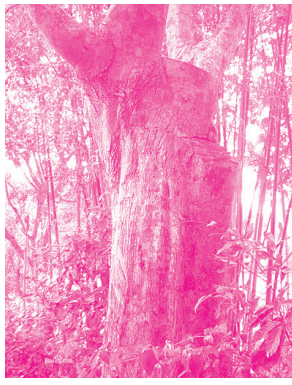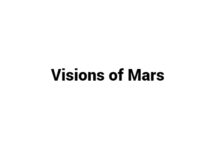Table of Contents
Passage
A June 30,1908, 7:14 a.m., central Siberia—Semen Semenov, a local farmer, saw “the sky split in two. Fire appeared high and wide over the forest… From… where the fire was, came strong heat….Then the sky shut closed, and a strong thump sounded, and I was thrown a few yards…. After that such noise came, as if … cannons were firing, the earth shook …” Such is the harrowing testimony of one of the closest eyewitnesses to what scientists call the Tunguska event, the largest impact of a cosmic body to occur on the earth during modern human history. Semenov experienced a raging conflagration some 65 kilometers (40 miles) from ground zero, but the effects of the blast rippled out far into northern Europe and Central Asia as well. Some people saw massive, silvery clouds and brilliant, colored sunsets on the horizon, whereas others witnessed luminescent skies at night—Londoners, for instance, could plainly read newsprint at midnight without artificial lights. Geophysical observatories placed the source of the anomalous seismic and pressure waves they had recorded in a remote section of Siberia. The epicenter lay close to the river Podkamennaya Tunguska, an uninhabited area of swampy taiga forest that stays frozen for eight or nine months of the year.
B Ever since the Tunguska event, scientists and lay enthusiasts alike have wondered what caused it. Although most observers generally accept that some kind of cosmic body, either an asteroid or a comet, exploded in the sky above Siberia, no one has yet found fragments of the object or any impact craters in the affected region. The mystery remains unsolved, but our research team, only the latest of a steady stream of investigators who have scoured the area, may be closing in on a discovery that will change our understanding of what happened that fateful morning.
C Part of the enduring mystery of the Tunguska event harks back to the stark physical isolation of central Siberia and the political turmoil that raged in Russia during the early 20th century, a time when the czarist empire fell and the Soviet Union emerged. These two factors delayed scientific field studies for nearly 20 years. Only in 1927 did an expedition led by Leonid Kulik, a meteorite specialist from the Russian was confronted with some almost unbelievable scenery. Amazingly, the blast had flattened millions of trees in a broad, butterfly-shaped swath covering more than 2,000 square kilometers (775 square miles). Furthermore, the tree trunks had fallen in a radial pattern extending out for kilometers from a central area where “telegraph poles,” alone stand of partially burned tree stumps, still remained. Kulik interpreted this ravaged landscape as the aftermath of an impact of an iron meteorite. He then began to search for the resulting crater or meteorite fragments.
D Kulik led three additional expeditions to the Tunguska region in the late 1920s and 1930s, and several others followed, but no one found clear-cut impact craters or pieces of whatever had hit the area. The dearth of evidence on-site gave rise to various explanatory hypotheses. In 1946, for instance, science-fiction writer Alexander Kazantsev explained the puzzling scene by positing a scenario in which an alien spacecraft had exploded in the atmosphere. Within a few years, the airburst theory gained scientific support and thereafter limited further speculation. Disintegration of a cosmic object in the atmosphere, between five and 10 kilometers above the surface, would explain most of the features investigators observed on the ground. Seismic observatory records, together with the dimensions of the devastation, allowed researchers to estimate the energy and altitude of the blast.

E The lack of an impact crater also suggested that the object could not have been a sturdy iron meteorite but a more fragile object, such as a relatively rare, stony asteroid or a small comet. Russian scientists favored the latter hypothesis because a comet is composed of dust particles and ice, which would fail to produce an impact crater. Another explanation for the tumult in the Tunguska region claimed that the destruction resulted from the rapid combustion of methane gas released from the swampy ground into the air.
F In 1975 , Ari Ben-Menahem, a seismologist at the Weizmann Institute of Science in Rehovot,Israel, analyzed the seismic waves triggered by the Tunguska event and estimated that the energy released by the explosion was between 10 and 15 megatons in magnitude, the equivalent of 1,000 Hiroshima atomic bombs. Astrophysicists have since created numerical simulations of the Tunguska event to- try to decide among the competing hypotheses. The airburst of a stony asteroid is the leading interpretation.
G Models by Christopher F. Chyba, then at the NASA Ames Research Center, and his colleagues proposed in 1993 that the asteroid was a few tens of meters in diameter and that it exploded several kilometers above the ground. Comparison of the effects of nuclear test airbursts with the flattened pattern of the Tunguska forest seems to confirm this suggestion.

H More recent simulations by N. A. Artemieva and V. V. Shuvalov, both at the Institute for Dynamics of Geospheres in Moscow, have envisioned an asteroid of similar size vaporizing five to 10 kilometers ab ove Tunguska. In their model, the resulting fine debris and a downward propagating gaseous jet then dispersed over wide areas in the atmosphere. These simulations do not, however, exclude the possibility that metersize fragments may have survived the explosion and could have struck the ground not far from the blast.
I Late last year Mark Boslough and his team at Sandia National Laboratories concluded that the Tunguska event may have been precipitate by a much smaller object than earlier estimates had suggested. Their supercomputer simulation showed that the mass of the falling cosmic body turned into an expanding jet of high-temperature gas traveling at supersonic speeds. The model also indicated that the impactor was first compressed by the increasing resistance of the earth’s atmosphere. As the descending body penetrated1 deeper, air resistance probably caused it to explode in an airburst with strong flow of heated gas that was carried downward by its tremendous omentum. Because the fireball would have transported additional nergytoward the surface, what scientists had thought to be an explosion between 10 and 20 megatons was more likely only three to five megatons, according to Boslough. All this simulation work only strengthened (and continues to strengthen) our desire to conduct fieldwork at the Tunguska site.
Questions
Questions 1-6 The reading passage has seven paragraphs, A-I
Choose the correct heading for paragraphs A-F from the list below.
Write the correct number, i-ix, in boxes 1-6 on your answer sheet.
List of Headings
i. Specialists investigate the bizarre scene
ii. Model proved by atomic experiment
iii. Mystery remains for further explanation
iv. Terrifying description from witness
v. Rare clue arouses fantasy assumptions
vi. Some scientists assume the explosion never happened
vii. Meteorite theory is still a dominant explanation
viii. The Crater is hided in messy scene
ix. Scientific explanation for an untraceable crater
1 Paragraph A
2 Paragraph B
3 Paragraph C
4 Paragraph D
5 Paragraph E
6 Paragraph F
Questions 7-11 Use the information in the passage to match the people (listed A-I) with opinions or deeds below. Write the appropriate letters A-E in boxes 7-11 on your answer sheet.
NB you may use any letter more than once
A Alexander Kazantsev
B Christopher F. Chyba
C Ari Ben-Menahem
D Mark Boslough
E Leonid Kulik
7 The traceless crater is due to explosion above ground.
8 Fictional depiction for Tunguska explosion.
9 Proposed a hypothesis of atomic quantity estimate.
10 Regarded messy scene caused by a meteorite.
11 The magnitude of the explosion is different from previous one.
Questions 12-13 Choose the TWO correct letters from following options. Write your answers in boxes 12-13 on your answer sheet.
Which TWO of the following statements are correct according to this passage?
A More recent simulations prove the previous model has flaws.
B Craters of explosion has not been found yet
C Semen Semenov is the only witness of Tunguska Event
D Hard evidence of simulation indicates unnecessary field research.
E Friction of atmosphere may lead to meteorite explosion
Answers



